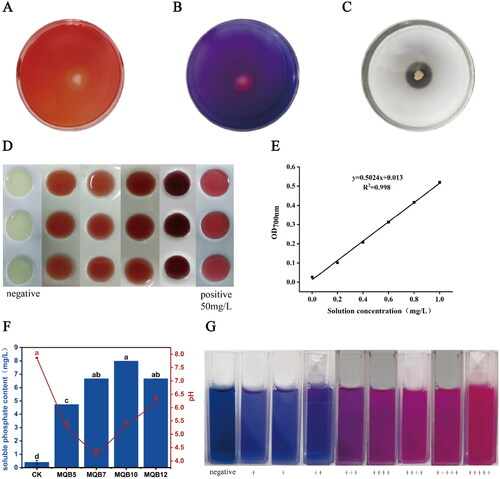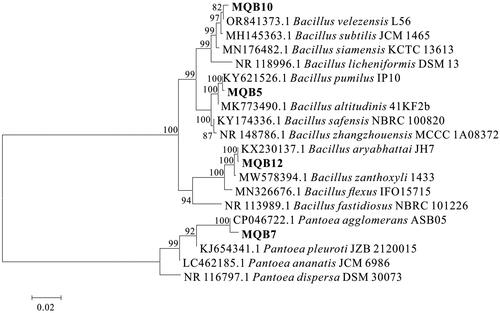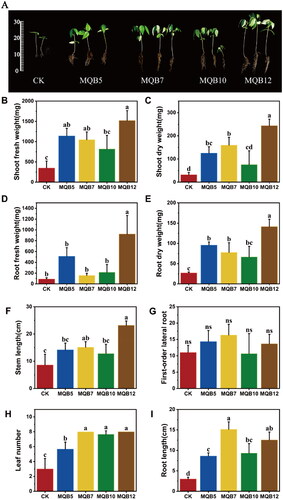Figures & data
Figure 1. Plant growth promotion characteristics of isolated rhizobacteria in vitro. (A) Isolate samples showing cellulase production; (B) Isolate samples showing siderophore production; (C) Isolate samples showing phosphate solubilization. A clear halo around the bacterial colony indicates positive results; (D) In vitro colorimetric determination of IAA and indole compounds in bacterial supernatants. A pink color indicates positive reaction; (E) Phosphorus standard curve; (F) Phosphorus soluble content and pH value of four strains; (G) Determination of siderophore in bacterial supernatant. The pink color of the solution indicates that the siderophore content is higher, and the blue color is the opposite.

Table 1. Results of plant growth promotion activity test of bacterial isolates.
Figure 2. Neighbor-joining phylogenetic analysis originating from the multiple alignments of 16S rRNA gene sequence of PGPR strains with those of other closely related strains existing in the GenBank database.

Table 2. Molecular identification of rhizobacteria based on 16S rRNA gene sequences.
Figure 3. Growth-promotion effects of the obtained strains MQB5、7、10、12 on V. radiata seedlings after cocultivation for 30 days (A), CK was irrigated with sterile water. The effects of PGPR strains MQB5, 7, 10, and MQB12 on the V. radiata seedlings shoot fresh weight (B), shoot dry weight (C), root fresh weight (D), root dry weight (E), stem length (F), first-order lateral root (G), leaf number (H), root length (I). Different letters (a-c) inducate statistically significant differences between each treatment vs the control (CK) group (p < 0.05), and the significance was determined via ANOVA.

Availability of data
The data that support the findings reported in this study are available from the corresponding author [YW] upon reasonable request.
